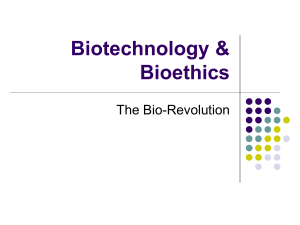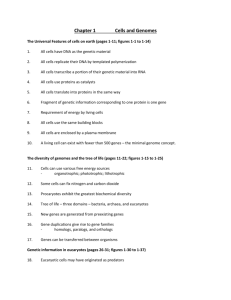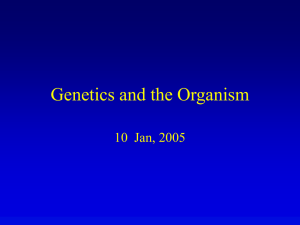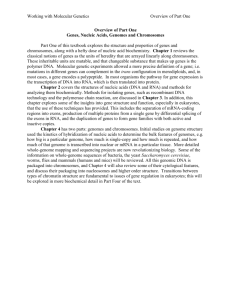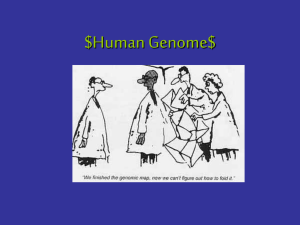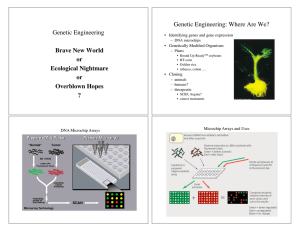biotechnology outline
advertisement
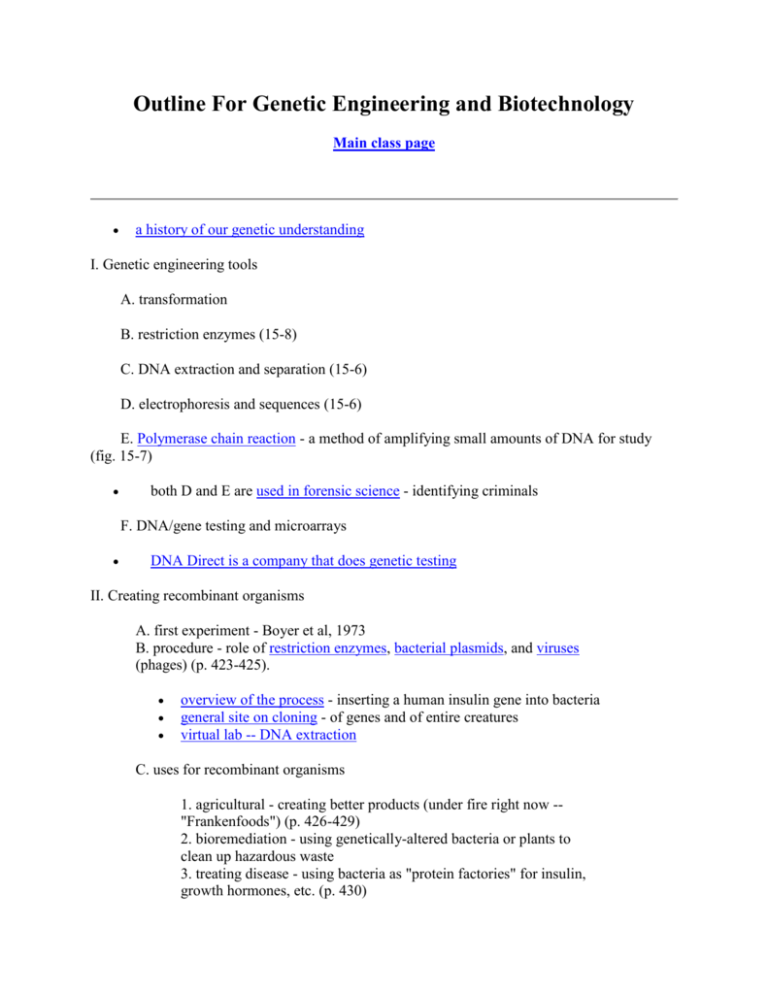
Outline For Genetic Engineering and Biotechnology Main class page a history of our genetic understanding I. Genetic engineering tools A. transformation B. restriction enzymes (15-8) C. DNA extraction and separation (15-6) D. electrophoresis and sequences (15-6) E. Polymerase chain reaction - a method of amplifying small amounts of DNA for study (fig. 15-7) both D and E are used in forensic science - identifying criminals F. DNA/gene testing and microarrays DNA Direct is a company that does genetic testing II. Creating recombinant organisms A. first experiment - Boyer et al, 1973 B. procedure - role of restriction enzymes, bacterial plasmids, and viruses (phages) (p. 423-425). overview of the process - inserting a human insulin gene into bacteria general site on cloning - of genes and of entire creatures virtual lab -- DNA extraction C. uses for recombinant organisms 1. agricultural - creating better products (under fire right now -"Frankenfoods") (p. 426-429) 2. bioremediation - using genetically-altered bacteria or plants to clean up hazardous waste 3. treating disease - using bacteria as "protein factories" for insulin, growth hormones, etc. (p. 430) 4. uses for cloned sheep and other mammals (same as number 3 advantages over bacteria because of ability to synthesize more products) | more on Cloning unconventional uses - check out transgenic artwork process of cloning: fig 15-12 D. gene therapy: inserting "corrective" genes into humans 1. first done in 1990, to treat ADA (an immune disease) E. germ-line gene therapy (changing the gametes) III. the human genome project (click for links and current information) | section 14-3 A. goals 1. find physical locations of all human genes 2. find the base sequence of the human genome How do they do that??? | more look at the results -- browse the gene bank 3. continue sequencing genomes of other organisms, such as fruit flies (Drosophila) and bacteria (E. coli) Other animal genomes have been sequenced or are being sequenced | fig 14-15 4. develop databases of information on human traits and diseases, to be used in treating disease B. status The project is essentially done - Genomes to Life is the next step | learn more special NOVA site on the Human Genome Project National Institutes of Health is working in identifying cancer genes, other disease genes, and also the variations between different people You can use the new Health History page to research genes in your own family The J Craig Venter Institute IV. ethical issues A. who should have access to genetic tests? B. can companies receive patents on genetically-altered organisms? C. should we be using gene therapy? How about germ-line therapy? D. should we use embryonic stem cells in research Note: most of the links on this page are to the Access Excellence site, operated by the National Health Museum. Go here for information on using these images.

